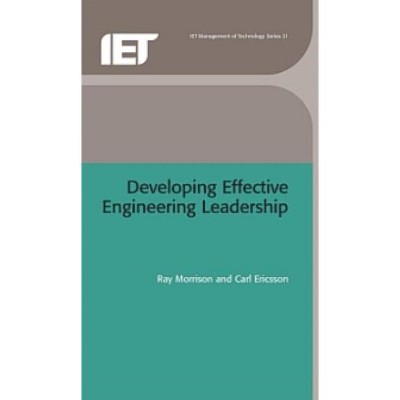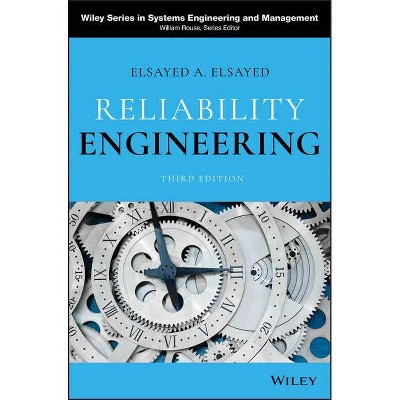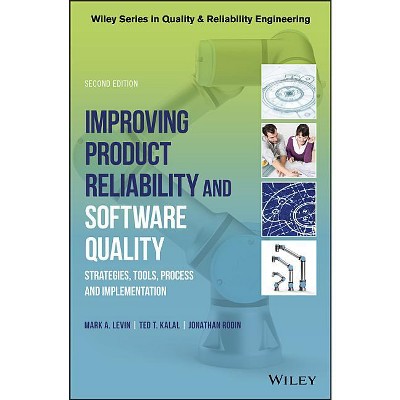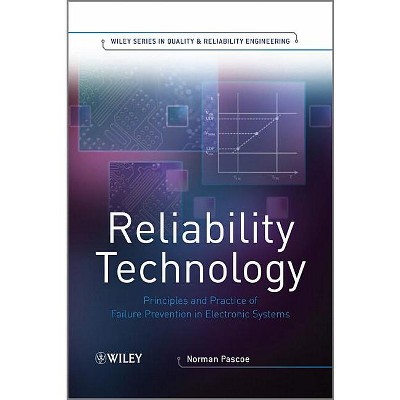About this item
Highlights
- Outlines the correct procedures for doing FMEAs and how to successfully apply them in design, development, manufacturing, and service applications There are a myriad of quality and reliability tools available to corporations worldwide, but the one that shows up consistently in company after company is Failure Mode and Effects Analysis (FMEA).
- About the Author: CARL S. CARLSON is a consultant and instructor in the areas of FMEA, reliability program planning, and other reliability engineering disciplines.
- 464 Pages
- Technology, Quality Control
- Series Name: Quality and Reliability Engineering
Description
About the Book
"This book recognizes that correctly done FMEAs are essential to achieving high quality and reliability in products and processes, and are the central core of Design for Six Sigma, Design for Reliability and other Quality and Reliability programs. The Objective of the book is to define the correct procedure for doing FMEAs and to outline specifically how to successfully apply the FMEA procedure in design, development, manufacturing, and service applications. The book will also share the most common mistakes in doing FMEAs and how to turn these into quality objectives, as well as how to implement effective FMEA processes in companies. It is a practical book showing both the practitioner and manager the key elements of successful FMEA systems. It is based upon the author's extensive experience with thousands of FMEAs, and a many dozen of companies. The reader will understand how to do FMEA correctly, and how to implement effective FMEA programs"--Book Synopsis
Outlines the correct procedures for doing FMEAs and how to successfully apply them in design, development, manufacturing, and service applications
There are a myriad of quality and reliability tools available to corporations worldwide, but the one that shows up consistently in company after company is Failure Mode and Effects Analysis (FMEA). Effective FMEAs takes the best practices from hundreds of companies and thousands of FMEA applications and presents streamlined procedures for veteran FMEA practitioners, novices, and everyone in between.
Written from an applications viewpoint--with many examples, detailed case studies, study problems, and tips included--the book covers the most common types of FMEAs, including System FMEAs, Design FMEAs, Process FMEAs, Maintenance FMEAs, Software FMEAs, and others. It also presents chapters on Fault Tree Analysis, Design Review Based on Failure Mode (DRBFM), Reliability-Centered Maintenance (RCM), Hazard Analysis, and FMECA (which adds criticality analysis to FMEA).
With extensive study problems and a companion Solutions Manual, this book is an ideal resource for academic curricula, as well as for applications in industry. In addition, Effective FMEAs covers:
-
The basics of FMEAs and risk assessment
-
How to apply key factors for effective FMEAs and prevent the most common errors
-
What is needed to provide excellent FMEA facilitation
-
Implementing a "best practice" FMEA process
Everyone wants to support the accomplishment of safe and trouble-free products and processes while generating happy and loyal customers. This book will show readers how to use FMEA to anticipate and prevent problems, reduce costs, shorten product development times, and achieve safe and highly reliable products and processes.
From the Back Cover
Outlines the correct procedures for doing FMEAs and how to successfully apply them in design, development, manufacturing, and service applications
There are a myriad of quality and reliability tools available to corporations worldwide, but the one that shows up consistently in company after company is Failure Mode and Effects Analysis (FMEA). Effective FMEAs takes the best practices from hundreds of companies and thousands of FMEA applications and presents streamlined procedures for veteran FMEA practitioners, novices, and everyone in between.
Written from an applications viewpoint--with many examples, detailed case studies, study problems, and tips included--the book covers the most common types of FMEAs, including System FMEAs, Design FMEAs, Process FMEAs, Maintenance FMEAs, Software FMEAs, and others. It also presents chapters on Fault Tree Analysis, Design Review Based on Failure Mode (DRBFM), Reliability-Centered Maintenance (RCM), Hazard Analysis, and FMECA (which adds criticality analysis to FMEA).
With extensive study problems and a companion Solutions Manual, this book is an ideal resource for academic curricula, as well as for applications in industry. In addition, Effective FMEAs covers:
- The basics of FMEAs and risk assessment
- How to apply key factors for effective FMEAs and prevent the most common errors
- What is needed to provide excellent FMEA facilitation
- Implementing a "best practice" FMEA process
Everyone wants to support the accomplishment of safe and trouble-free products and processes while generating happy and loyal customers. This book will show readers how to use FMEA to anticipate and prevent problems, reduce costs, shorten product development times, and achieve safe and highly reliable products and processes.
About the Author
CARL S. CARLSON is a consultant and instructor in the areas of FMEA, reliability program planning, and other reliability engineering disciplines. He also currently supports clients of ReliaSoft Corporation. He has thirty years' experience in reliability testing, engineering, and management positions, including manager of product reliability at General Motors. He co-chaired the cross-industry team that developed the commercial FMEA standard (SAE J1739, 2002 version) and was a past member of the Reliability and Maintainability Symposium (RAMS) Advisory Board. He holds a BS in mechanical engineering from the University of Michigan and is a Certified Reliability Engineer.












